Симферопольский клад - [7]
Gold, silver, silver with guilt, bronze, cast iron and even wooden paitsa are known. The silver paitsa in the Simferopol treasure weighs 497.9 grammes, and has a guilt inscription on both sides reading as follows: "Issued by the great khan of the Eternal Heavens. Those unfaithful to Mongols are deprived of their lives." Shown on the obverse side of the paitsa, amidst fluffy clouds in its upper part is a guilt picture of the sun in the form of a circle with a six-petal rosette inside symbolizing radiating sunbeams. The reverse side is decorated by a guilt crescent also in the surrounding of clouds. These ornaments are similar to the drawings on paitsa discovered in the lower reaches of the Volga and containing the names of khans in their inscriptions. One is the name of khan Tokhta (1290-1312) and the other -of khan Uzbek (1312-1341). The similarity of the ornament on all the three items gives the reason to refer the paitsa from the Simferopol treasure to the category of a 14th-century paitsa of the Golden Horde.
It is quite possible that one of the Golden Horde khans had presented the owner of the treasure not only with the paitsa but also with some other articles. The famous Venetian traveller Marco Polo writes that along with the plates that is the paitsa, the great khans also granted silverware. There are also silver vessels in the Simferopol treasure. For instance, a bowl with a circular bottom and stylized inscriptions on its outer and inner surfaces, a small vessel with a spout, an inkpot decorated with fancy stamps with a floral ornament, a spherical vessel with a lid, its surface, divided into sections and adorned with floral patterns against a niello background. Only conjectures can be made about the designation of this wonderful vessel. It is quite possible that it was used to hold ceruse, antimony and other cosmetics that had to be sifted and ground by means of special articles. There is no doubt that the long narrow spoon and the spoon-sieve also found in the treasure served this purpose.
A spoon-ladle with an interesting figurine of a man at the end of the handle is worthy of note. The man is sitting, elbows resting on his knees, holding with both hands a vessel from which he is drinking. The man wears a conical Turko-Mongolian hat. Its crown has stitched vertical seams joining at the top. There is also a stylized figurine of an eagle-owl with huge round eyes at the place where the handle joins the ladle. Most probably this figurine served as a charm protecting the owner from evil spirits. The Mongols venerated the eagle-owl from ancient times.
By their nature, ornament and technique these articles, including the paitsa, are very close to similar objects encountered on the main territory of the Golden Horde. It should be believed that these things were made by Golden Horde craftsmen, chiefly from the towns in the lower reaches of the Volga known as the centres of developed handicrafts.
All the articles in the treasures, with the exception of coins, are men's and women's ornaments. They include parts of an extremely exquisite women's headdress consisting of 19 shaped gold spangles and a top one covered with gems, pearls and six-petal rosettes attached to curved stalks. The centre of the top spangle was adorned with two beads placed one above the other and passing through them was a core with a broken top end. Very likely the core was ended by a tube for inserting feathers. For instance, Ibn-Battuta reports that on the top of their hats women of the Tatar nobility wore golden circles covered with precious stones and adorned with peacock feathers. The hat of the Simferopol treasure also had a top spangle, the rest of the surface being covered with shaped spangles glistening with pearls and gems, among them - amethysts, turquoise, spinel, emeralds, sapphires, chrysoprase and jasper pebbles. It may be that chains of medallions with inserts of gems or pearls were suspended to this lavish head-dress. The reverse side of each medallion is decorated with a flower image, in some instance of lotus, against a niello background.
Among decorations earrings could also be found. In the Turko-Mongol society earrings were worn both by women and men. It is known that Mongols already wore earrings in the times of Genghis Khan. Describing khan Berke (1256-1266) the Arab writer Al-Mufaddal also mentioned his earring. He wrote: "At the time King Berke was 56 years old. He had a thin beard, a big yellow face, he combed his hair behind his ears and in one ear had a golden ring with a precious (octahedral) gem."
In all, the treasure includes five earrings in the form of a question mark. This type was widespread throughout the vast territory taken up by the Golden Horde, is found in even earlier traces of nomad tribes culture and has numerous variants. The earrings of the Simferopol treasure have a composite core wound with wire and have one or two pearls at the end. One earring has a spinel and a large pearl of irregular form, the so called "orphan", meaning it was matchless. Such rare pearls were highly valued. These earrings date to the late 14th and early 15th centuries. The already mentioned chains of medallions could also serve as decorations worn on the chest. Thus, even in the recent past Kazan Tatars adorned themselves with chains of coins and medallions hanging down from loops on the collar and were known by the name of "Dzhiaka". Scalloped and shaped spangles with holes for a cord or a chain in their looped sides could serve as similar decorations worn on the chest. There were 15 such items in the treasure. All the spangles are of an extremely fine filigree work with the exception of one, stamped, bearing the inscription in Arabic, "Glory and happiness". The form of the spangles and some elements of their ornament resembling of elements encountered in Central Asian architecture and applied art. A treasure found in the former Bukhara khanate (the actual place cannot be defined with more accuracy) contained ornaments similar to the spangles of the Simferopol treasure. Summing up the above, we can assume that the spangles in the Simferopol treasure were also made by skilled Central Asian jewellers.
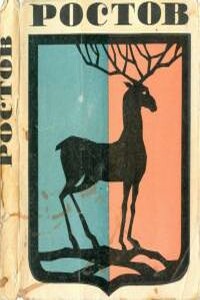
Если выехать из столицы нашей Родины по магистрали Москва - Ярославль, то через три часа на пути встретится небольшой город - Ростов-Ярославский. Ростов имеет давнюю, богатую событиями историю, В здешних краях формировалась русская народность, крепло и развивалось русское государство, складывалась и росла культура нашего народа. На протяжении своей многовековой истории Ростов оказывался центром государственной, политической, административной, религиозной, экономической, культурной жизни края или страны. Ростов Великий - такое имя носил он в далеком прошлом.
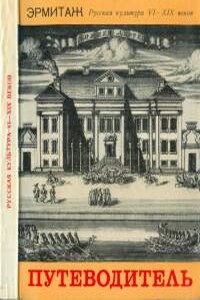
Вся экспозиция по истории русской культуры, размещенная во многих, преимущественно парадных, залах Зимнего дворца, состоит из нескольких постоянных выставок. Каждая из них самостоятельно представляет интерес для изучения культуры того или иного исторического периода. В целом же выставки дают достаточно широкое представление о развитии многогранной культуры русского народа с VI века и, в основном, до 60 - 70-х годов XIX столетия.
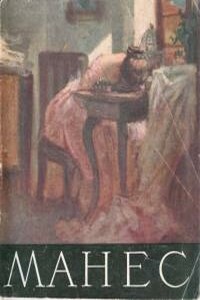
Иозеф Манес стоит в ряду славной плеяды лучших представителей чешского искусства и литературы XIX века. Его имя называют рядом с именами Бедржиха Сметаны, Божены Немцовой, Яна Неруды.Рисовальщик, иллюстратор, живописец и художник-монументалист Йозеф Манес является по существу родоначальником реалистического чешского искусства XIX века.

Панорама обороны Севастополя - замечательное творение батальной живописи. Создал ее выдающийся художник-баталист Ф. А. Рубо, основатель русской школы панорамного искусства. В годы Великой Отечественной войны панорама была сильно повреждена фашистскими варварами. После войны восстановлена советскими художниками.Очерк-путеводитель рассказывает о первой обороне Севастополя, о панораме и ее творцах.Издание третье, переработанное.
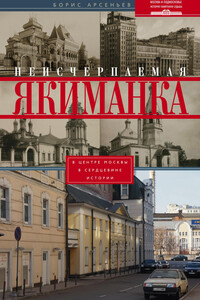
Якиманка лежит в самом сердце столицы – напротив Кремля за Москвой-рекой. Она, кажется, вместила в себя целый мир – улицы, площади, дома, парки, события, судьбы, явления, замыслы, традиции, курьезы, легенды и тайны… Она переполнена достопримечательностями. Среди них архитектурные памятники и целые ансамбли семи столетий – с XV по XXI. Многие сооружения Якиманки давно признаны хрестоматийными, неизменно включаются в архитектурные справочники и энциклопедии.
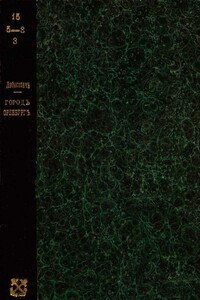
В книге рассказывается история главного героя, который сталкивается с различными проблемами и препятствиями на протяжении всего своего путешествия. По пути он встречает множество второстепенных персонажей, которые играют важные роли в истории. Благодаря опыту главного героя книга исследует такие темы, как любовь, потеря, надежда и стойкость. По мере того, как главный герой преодолевает свои трудности, он усваивает ценные уроки жизни и растет как личность.